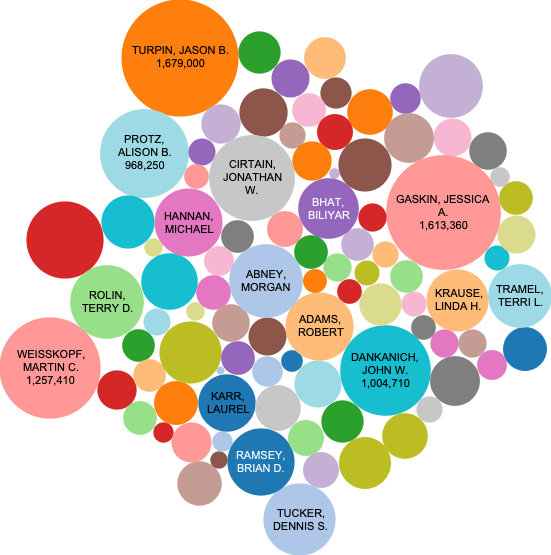Aligning Investments with Strategic Priorities
Project Summary
Incorporating Bintel’s AI technology at the time, the application provides NASA the capability to have data mining agents parse and score unstructured content against the 354 technologies identified in the 17 Technology Roadmaps. This ability to score proposals with cognitive agents enabled ACO to perform statistical analysis within the Information Based Decision framework for Strategic Investments. Using AI classifier libraries, “read” the 500 documents in 300 project sharepoint folders and classify them. The first set of classifiers was trained to understand each of MSFC’s “Beats” or Strategic Vectors for the Center for 2016. The goal was to enable Agency leadership to understand how well their investments across five funds complied with their strategic priorities, even though three of those years were prior to 2016. In addition to providing more comprehensive analytics on the investment, the integration of the investment database, the automated classification and the Tableau business intelligence application saved OSAC staff substantial hours over the manual process of Excel spreadsheets, charts and powerpoints.
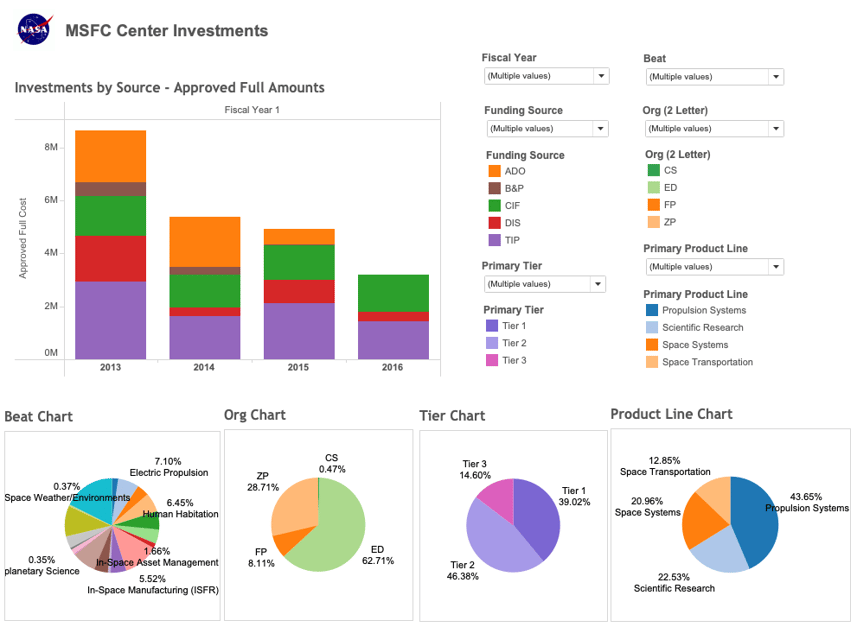
Relevance
The use of AI classifiers provided MSFC with the ability to classify the content as written without the need for engineering support due to the technical nature of the content. They also provide the ability to score the portfolio against current priorities, without losing the ability to use historical fixed classification done by an analyst and subject to variability from year to year. This also provides a check on those proposing and self classifying their proposal and gaming the system in order to get a project approved.
The other benefit of this approach is the ability to classify the projects even though some had only one quad chart in the folder while others had dozens of pages of reports and proposals.
For the benefit of repurposing investment outcomes, this approach classifies documentation at the paragraph level so that an investment that addresses multiple priorities will not be classified pertaining to one priority.
This approach will also provide the ability to classify projects from other Agencies based on published reports to identify similar work and experts in the same area of investigation.
The project also tested the use of a second set of classifiers trained for the NASA Technology Taxonomy to provide another layer of analytics and a second means to purpose the results.
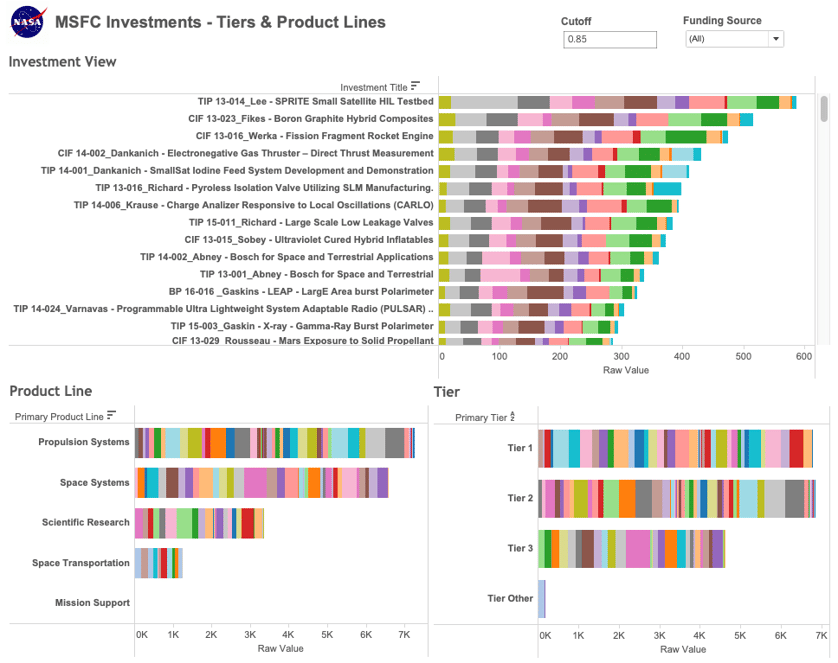
Bintel uses intelligent agents as the “evaluators” and assisting ACO to perform the Technology Assessment of their investments. We have a unique ability to support ACO with this task. We have been collaborating with ACO since 2016 to better understand the problems ACO faces and believe this partnership will lead to an entirely new approach and capability within MSFC.
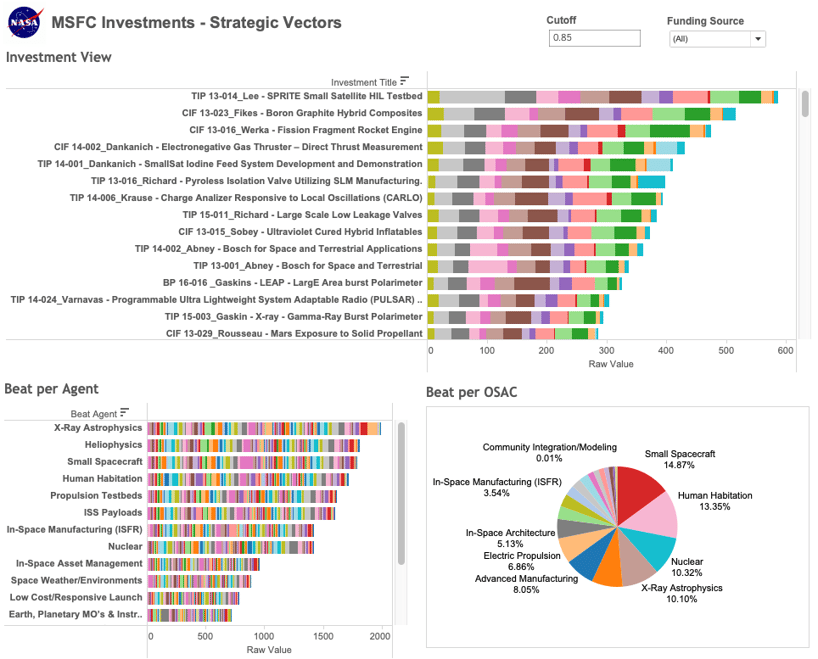
In order to achieve the goals of the pilot, we created the Bintel Topic-Mapper to extract and process semantic fingerprints within a set of documents (textual corpora). The Bintel Topic-Mapper harnessed the capability to discern patterns in the words and associations that are central to the meaning of all or a portion of wireless sensor text documents. Our technology learned the keywords and associations, filtering out the noise to create a fingerprint array of the concepts within.
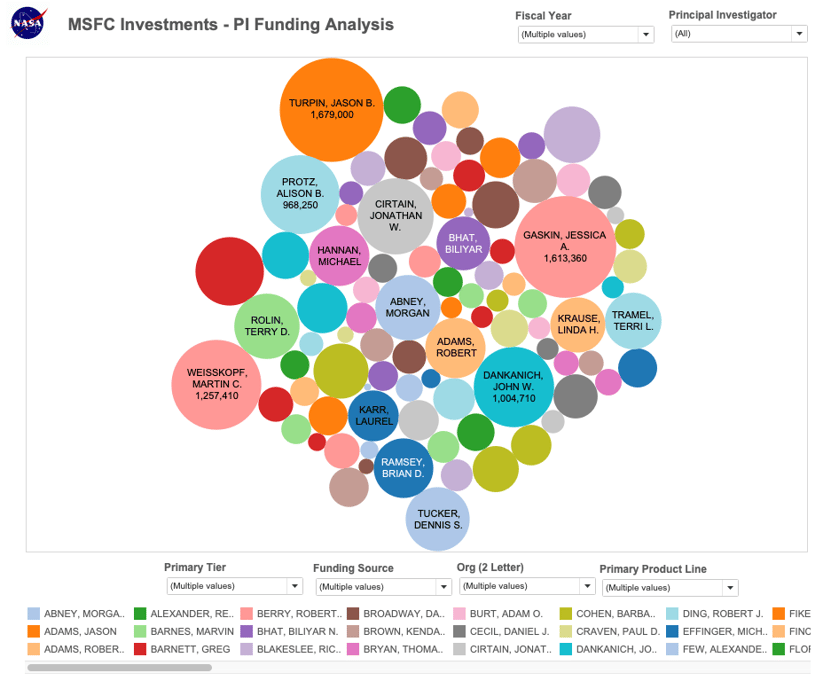
The project metadata included the principal investigators and as such we were able to provide different views of projects and investments organized by PI. Given that a PI is generally an expert in one field it served to cross reference the type of research ensuring the most qualified PI was working on a project.
As in the original Topic-Mapper Project that involved evaluation of technical proposals, these are written by specialists in their field. This fact made the evaluation and classification complicated and time consuming, even for an experienced engineer, not to mention an administrative person in the finance office.
Final Analysis
Once the intelligent agents scored the similarity to each paragraph of content, the software provided the ability to categorize and display results pulled from the core data. Paragraphs are evaluated and traced back to their source document for reporting and distribution. This information was stored in MongoDB and exported to other databases for access by other applications or used directly to support a workflow. The first phase was completed in fall 2015 with the final report for the Pilot (wireless sensor roadmap outline) highlighted in Marshall’s Technology Report for 2015. We have now completed four additional projects leveraging the technology and applications developed here (described in the following series of Case Studies).
Related Projects for NASA
Once this project validated the ability to curate technical research using multiple taxonomies and ontologies, it was applied to Portfolio Investment Analysis, a cost reduction project for the RS-25 Engine, Engineering Research Support for Model Based Systems Engineering and several competitive intelligence projects. This work led to the development of Bintel’s Commercial Strategy Platform and is being applied to the identification and quantification of Innovation Ecosystems in the space industry. More information is available on the Bintel website and addition Case Studies are in process.

